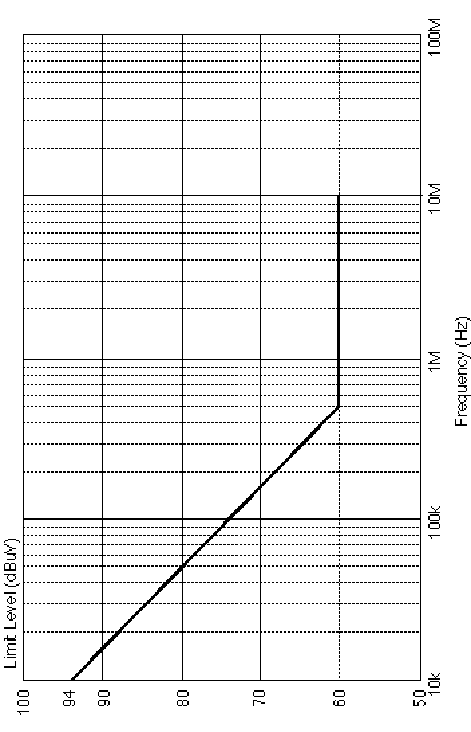

M1A1 ABRAMS FIREPOWER ENHANCEMENT
SYSTEM REQUIREMENTS DOCUMENT
1. Operational Capability. The M1A1 Abrams Firepower Enhancement Program (FEP) shall increase the Marine Corps’ day and night warfighting capability and contribute significantly to the mission of winning decisively on the battlefield, with minimum casualties. The FEP system shall increase all weather, day and night target acquisition and engagement ranges.
2. M1A1 FEP System Description. The M1A1 FEP system is defined as an improved thermal sight and associated components, along with associated spares and repair parts, support equipment, training equipment, test and evaluation equipment, platform integration and data.
3. Requirements.
3.1 Key Performance Parameters (KPP). The M1A1 FEP KPPs are: Target Acquisition Range (Identify, Detect, Recognize), Field of View (FOV), hit probability retention and Average Unit Production Price. These are characteristics so significant that failure to meet the requirements may be cause for the offeror’s system concept and program to be rejected.
a. The M1A1 FEP shall provide target acquisition ranges during on the move operation, vehicle engine idle, and silent watch operations, as viewed through the Gunner’s Primary Monocular Sight, per the tables below, the classified values are provided in Annex A.
Threshold Requirements
|
Moderate Weather |
Adverse Weather |
CL a2 |
CL a4 |
Fog Oil |
|
|
WFOV Detection |
|||||
|
NFOV Detection |
|||||
|
NFOV Recognition |
|||||
|
NFOV Identification |
Objective Requirements
|
Moderate Weather |
Adverse Weather |
CL a2 |
CL a4 |
Fog Oil |
|
|
WFOV Detection |
|||||
|
NFOV Detection |
|||||
|
NFOV Recognition |
|||||
|
NFOV Identification |
b. The system shall have at a minimum two field of views (FOV) (threshold). The wide horizontal FOV shall be 10 degrees minimum (threshold) and 15 degrees (objective). The wide vertical FOV shall be 7.5 degrees minimum (threshold and objective). The narrow horizontal FOV shall be 3.33 degrees minimum (threshold) and 5.0 degrees (objective). The narrow vertical FOV shall be 2.0 degrees minimum (threshold) and 2.5 degrees (objective).
c. The system shall maintain or improve associated weapons hit probability as identified in Annex A.
d. The system shall meet the Average Unit Production Price (AUPP) of 238,000 FY 2000 dollars (threshold) and 180,000 FY 2000 dollars (objective) based on 403 systems over a three year production period.
3.2 Critical Performance Parameters (CPP). These are requirements that shall be included in the M1A1 FEP system design. The offeror has the freedom to trade the actual performance characteristic (s) of each CPP to attain an optimal system design.
a. The system shall operate without degradation from muzzle flash and tracer rounds from on board weapons.
b. The systems shall not be adversely affected by the operation of the M1A1 platform equipment. . For example, caused to flicker or turn off by laser firings or radio operation. The FEP system can not adversely affect the M1A1 platform. Annex C applies.
c. The system shall have a manual white-hot/black-hot polarity selection switch.
d. An electronic magnification zoom (E-Zoom) shall also be provided.
e. The system shall have the capability to generate symbology on the Gunner’s Primary Monocular Sight. At a minimum the symbology that currently exists in the M1A1 Thermal Imaging Systems shall be provided.
f. The system shall be provided with a visible reticle. The reticle shall be in accordance with Thermal Imaging System (TIS) Symbols - WFOV and NFOV as shown in figure 1.
g. The FOV switch time shall be no more than one (1) seconds.
h. The system shall meet the electro-optical counter-countermeasures (EOCCM) as identified in Annex A.
i. The system shall be provided with user acceptable controls and display(s).
j. The system shall be hardened against high altitude electromagnetic pulse damage as identified in Annex B.
k. The system shall be able to withstand the tactical environment including shock, vibration, and temperature as identified in Annex C.
l. Shall be constructed or treated to prevent lens fogging or condensation.
m. The system shall allow all operator functions, including normal care and cleaning, to be performed under all operational conditions while wearing nuclear-chemical-biological (NBC) ensembles; arctic, cold, and cold/wet protective clothing and equipment; and corrective lens.
n. Shall be moisture proof and fungus resistant as identified in Annex C.
o. Shall be NBC decontaminable as identified in Annex D.
p. Health and safety hazard shall be eliminated or the risks reduced to an acceptable level through design, material selection or substitution.
q. The fire control subsystem shall be designed to meet the Nuclear Hardness requirements as identified in Annex B.
r. The combat support requirements including reliability (650 hours Mean Time Between Failures), maintainability (2 hours Mean Time to Repair at organizational and intermediate level), shall not change, except possibly to improve.
3.3 Non-Critical Performance Parameters (NCPP). These are requirements that should be addressed in the M1A1 FEP system design. The offeror has the freedom to trade the actual performance characteristic (s) of each NCPP to attain an optimal system design.
a. Initial time to develop a fully operational image for optimum detection, recognition, and identification should be 14 minutes or less under all environmental conditions from a non-operating condition.
b. A digital electronic input/output port should be provided for subsequent implementation of such functions as automatic target cueing, automatic target tracking, aided target recognition, battlefield digitization, combat identification, imagery transmission, and built-in test functions.
c. The narrow FOV (NFOV) should focus from 200m to infinity. The wide FOV (WFOV) should focus from 50m to infinity.
d. The NFOV optical axis, defined by the center of the NFOV, should be aligned perpendicular to the reference mounting plane flange within ± 3 milliradians in both azimuth and elevation.
e. The optical axes (both narrow and wide) should maintain their alignment relative to the reference mounting plane over the temperature variations shown, to within the accuracy shown in Table I, after exposure to the environments of vibration, basic shock, and gun firing shock.
TABLE I. Alignment retention.
|
Temperature Range (°C) |
NFOV Accuracy (mrad) |
WFOV Accuracy (mrad) |
|
± 20 |
± 0.10 |
± 1.4 |
f. The WFOV optical axis, defined by the center of the WFOV, should be aligned parallel to the NFOV optical axis within ± 3 milliradians in both azimuth and elevation.
g. The image of a horizontal target (relative to the reference mounting plane) should be aligned parallel to a horizontal plane (relative to the reference mounting plane) to ± 4 milliradians. The image of a vertical target line should be parallel to the edge of the vertical FOV within ± 10.5 milliradians.
h. Logistics support for the upgraded system should generally be the same as the current system.
i. Automatic self test capability should be included.
j. The system should have a biocular display capable of displaying high resolution imagery sufficient to meet the performance requirements.
k. The system should be based on an open system, with standard interfaces and be designed to be upgradeable.
Thermal Imaging System
Narrow Field of View Reticle
Thermal Imaging System
Wide Field of View Reticle
Figure 1
ANNEX A
System Performance and Electro-Optics Counter Counter Measures
&
ANNEX B
Nuclear Hardness Criteria
Classified Annexes
OFFERORS SHALL CONTACT THE CONTRACTING OFFICER, MS. ROBIN RICHARDS, FOR ACCESS TO THIS DATA.
ANNEX C
1. Scope. This annex defines the current environmental and electro- magnetic conditions of the M1A1 Abrams Tank for the M1A1 Firepower Enhancement Program.
2.1 Temperature.
2.1.1 Operating temperature. The system shall fully operate during and after exposure to temperatures in the range of -32°C (-25°F) to 60°C (140°F).
2.1.2 Storage temperature. The system shall fully operate after exposure to temperatures in the range of -51°C (-60°F) to 71°C (160°F).
2.2 Vibration. The system shall fully operate after subjection to sinusoidal vibrations in accordance with Table III in each of the three mutually perpendicular axes.
TABLE III. Sinusoidal Vibration.
|
Axis |
Frequency (Hz) |
Amplitude |
|
5 to 25 |
± 1.0 g |
|
|
All |
26 to 35 |
.002286 centimeters (.03 inch) double amplitude |
|
36 to 500 |
± 2.0 g’s |
2.3 Shock.
2.3.1 Basic shock. The system shall fully operate during and after exposure to shock impulses of 30 ±3g with 11.0 ±1.1 msec half-sine wave applied in each direction of three mutually perpendicular axes.
2.3.2 Gun firing shock. The system shall fully operate during and after exposure to shock pulses of 100g ± 10g with 1.0 ± 0.1 milliseconds (ms) half-sine wave applied in each direction of three mutually perpendicular axes.
2.3.3 Ballistic shock. The system shall fully operate after exposure to shock impulses of 200g + 10 percent, 0.5 millisecond (ms) + 10 percent half sine wave applied in each direction of three mutually perpendicular axes.
2.4 Altitude. The system, when installed in an appropriate enclose, shall meet the requirements of this specification during exposure to altitudes after non-operational exposure to altitudes of up to 15,240 meters (50,000 feet) above sea level for durations up to 4 hours.
2.5 Humidity. The system, when installed in an appropriate enclosure at an internal pressure of 2109 to 3515 kilograms per square meter (3 to 5 pounds per square inch) gauge, shall fully operate during and after exposure to a relative humidity of up to 100 percent.
2.6 Cleaning spray. The system, when installed in an appropriate enclosure, shall not be damaged by, and shall meet the performance requirements of this specification after exposure to a jet spray of tap water with a maximum nozzle pressure of 110 psi for all items exterior to the turret and 25 psi for the rest of the system.
2.7 Fungus. The system shall not support fungus growth when exposed to inoculation by spraying external surfaces with spore suspension as defined by the specimen inoculation process of ATPD-2167 followed by exposure to ambient air temperatures of 30.0 ± 1.1°C (86 ± 2°F) at relative humidity of 95 ± 5 percent for a 28-day duration.
2.8 Salt fog. The system, when installed in an appropriate enclosure, shall meet the requirements of this specification after exposure to salt fog atmosphere for up to 48 hours. The salt fog atmosphere shall consist of a salt solution defined as 5 percent by weight NaCl and 95 percent by weight distilled water. The exposure zone temperature range shall be 32.2 to 35°C (90°F to 95°F). The fog density shall be approximately 3 quarts solution to 10 cubic feet of chamber volume per 24 hours.
2.9 Chemicals. The system, when installed in an appropriate enclosure, shall meet the requirements of this specification after exposure to vapors on and in direct contact with the following materials for 48 hours:
a. Fuel per ASTM D975 (commercial diesel No. 1-D or No. 2-D) or turbine aviation fuel (grades JP-4 or JP-5).
b. Rust inhibited, fire resistant hydraulic fluid with synthetic hydrocarbon base.
2.10 Electromagnetic interference (EMI). The assembly shall meet the following requirements:
2.10.1 Conducted emissions, power leads, 10kHz to 10 MHz. Conducted emissions on the assembly’s power leads, including returns, shall not exceed the values of Figure 1 for the frequency range of 10 kHz to 10 MHz.
2.10.2 Conducted susceptibility, power leads, 30 Hz to 50 kHz. The assembly shall not exhibit any damage, degradation of performance, or deviation from specified performance requirements beyond the tolerances specified in the individual performance requirements of this specification, when its power leads, including returns, are subjected to a test signal with levels as specified in Figure 2 for the frequency range of 30 Hz to 50 kHz.
2.10.3 Conducted susceptibility, bulk cable injection, 10 kHz to 10 MHz. The assembly shall not exhibit any damage, degradation of performance, or deviation from specified performance requirements beyond the tolerances specified in the individual performance requirements of this specification, when its power leads are subjected to a test signal with levels as specified in Figure 3 for the frequency range of 10 kHz to 10 MHz. The DC return shall be isolated from vehicle back to the power source.
2.10.4 Conducted susceptibility, bulk cable injection, impulse excitation. The assembly shall not exhibit any damage, degradation of performance, or deviation from specified performance requirements beyond the tolerances specified in the individual performance requirements of this specification, when its power leads are subjected to a test signal with levels as specified in Figure 4 at a 30 Hz rate for not less than one minute. The DC return shall be isolated from vehicle back to the power source.
2.10.5 Conducted susceptibility, damped sinusoidal transients, power leads 10 kHz to 100 MHz. The assembly shall not exhibit any malfunction, degradation of performance, or deviation from specified performance requirements beyond the tolerances specified in the individual performance requirements of this specification, when its power leads and returns are simultaneously subjected to a test signal which has a waveform and a current as specified in Figure 5.
2.10.6 Radiated emissions, electric field, 2 MHz to 18 GHz. The assembly shall not radiate E-field emissions in excess of those given in Figure 6 for the frequency range of 2 MHz to 18 GHz, or ten times the highest frequency generated within the assembly. Above 30 MHz, the limits shall be met for both horizontally and vertically polarized waves.
2.10.7 Radiated susceptibility, electric field, 10 kHz to 18 GHz. The assembly shall not exhibit any damage, degradation of performance, or deviation from specified performance requirements beyond the tolerances specified in the individual performance requirements of this specification, during or after being subjected to the radiated field characteristics as outlined in Table V.
2.10.8 Radiated susceptibility, transient electromagnetic field. The assembly shall not exhibit any damage, degradation of performance, or deviation from specified performance requirements beyond the tolerances specified in the individual performance requirements of this specification, when subjected to a test signal having a waveform and amplitude shown in Figure 7. The peak field strength for all components except the part of the sensor head above the turret roof shall be relaxed 26 dB.
TABLE V. Radiated susceptibility field characteristics.
|
Frequency |
Field Level |
Modulation |
|
10 kHz – 2 MHz |
5 V/M |
400 Hz AM @ 50 percent and CW |
|
2 MHz – 30 MHz |
5 V/M |
400 Hz AM @ 50 percent and CW |
|
30 MHz – 88 Mhz 1 |
5 V/M |
1000 Hz AM @ 50 percent and CW |
|
5 V/M |
Variable pulse rate modulation 2 |
|
|
88 MHz – 425 Mhz 1 |
5 V/M |
1000 Hz AM @ 50 percent and CW |
|
425 MHz - 447 Mhz 1 |
5 V/M |
1000 Hz AM @ 50 percent and CW |
|
5 V/M |
1200 Hz AM @ 50 percent and CW |
|
|
5 V/M |
2400 Hz AM @ 50 percent and CW |
|
|
5 V/M |
Pulse burst modulation 3 |
|
|
447 MHz - 1 Ghz 1 |
10 V/M |
1000 Hz AM @ 50 percent and CW |
|
1 GHz – 18 Ghz 1 |
10 V/M |
Pulse modulation 4 and CW |
NOTES:
1. Above 30 megahertz (MHz), the requirement shall apply for both horizontally and vertically polarized waves; circular polarized waves are not acceptable.
2. Variable pulse rate modulation is based on square wave modulation (100 percent) whose frequency is variable at discrete frequencies of 2.0, 4.0, and 8.0 kilohertz (kHz).
3. The pulse burst modulation shall be simulated by a 58,750 Hz squarewave logically multiplied by a pulse train with a pulse rate frequency (PRF) of 512 Hz and a pulse width of 800 micro-seconds.
4. Pulse modulation is based on a pulse width equal to one microsecond with a PRF of 200 kHz.

FIGURE 1. Conducted emissions power leads, 10 kHz to 10 MHz.
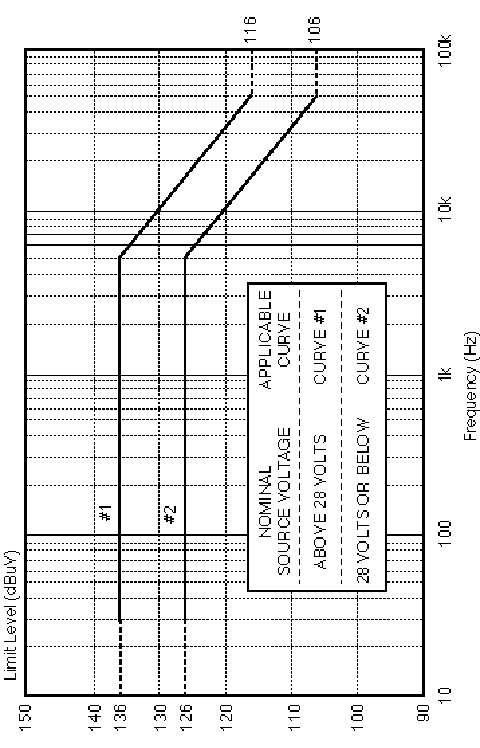
FIGURE 2. Conducted susceptibility power leads, 30 Hz to 50 kHz.
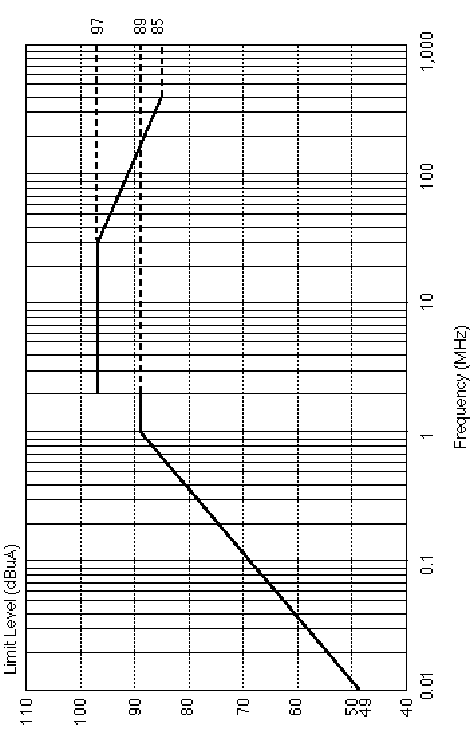
FIGURE 3. Conducted susceptibility bulk cable injection, 10 kHz to 10 MHz.
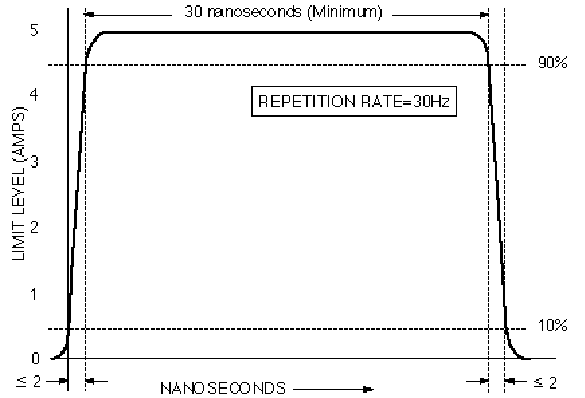
FIGURE 4. Conducted susceptibility, bulk cable injection, impulse excitation.
NOTES:
1. NORMALIZED WAVEFORM: e -(xft)/Q SIN (2p ft)
WHERE:
f = TEST FREQUENCY (HZ)
t = TIME (SECONDS)
Q = DAMPING FACTOR, 15 ± 5
2. DAMPING FACTOR (Q) SHALL BE DETERMINED AS FOLLOWS:
p
(N - 1)ln (IP/IN)
WHERE:
N = CYCLE NUMBER (I.E. N = 2, 3, 4, 5, ...)
IN = PEAK CURRENT AT NTH CYCLE
ln = NATURAL LOG
IP = PEAK CURRENT AT FIRST CYCLE, AS FOLLOWS:
FIGURE 5. Conducted susceptibility, damped sinusoidal transients.
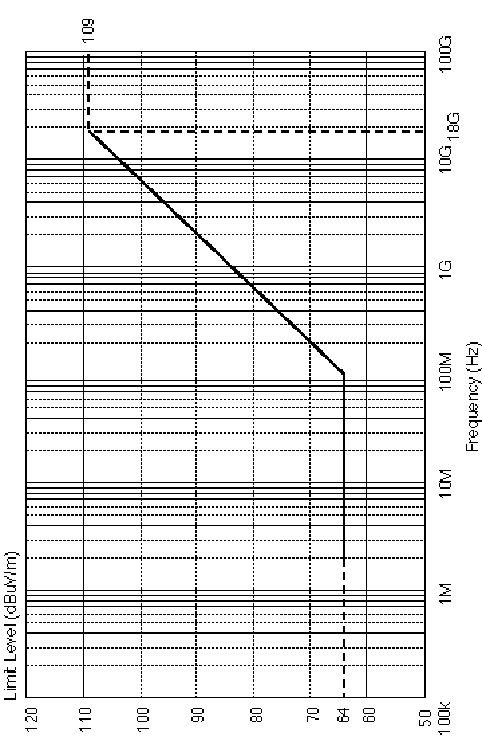
FIGURE 6. Radiated emissions electric field, 2 MHz to 18 GHz.
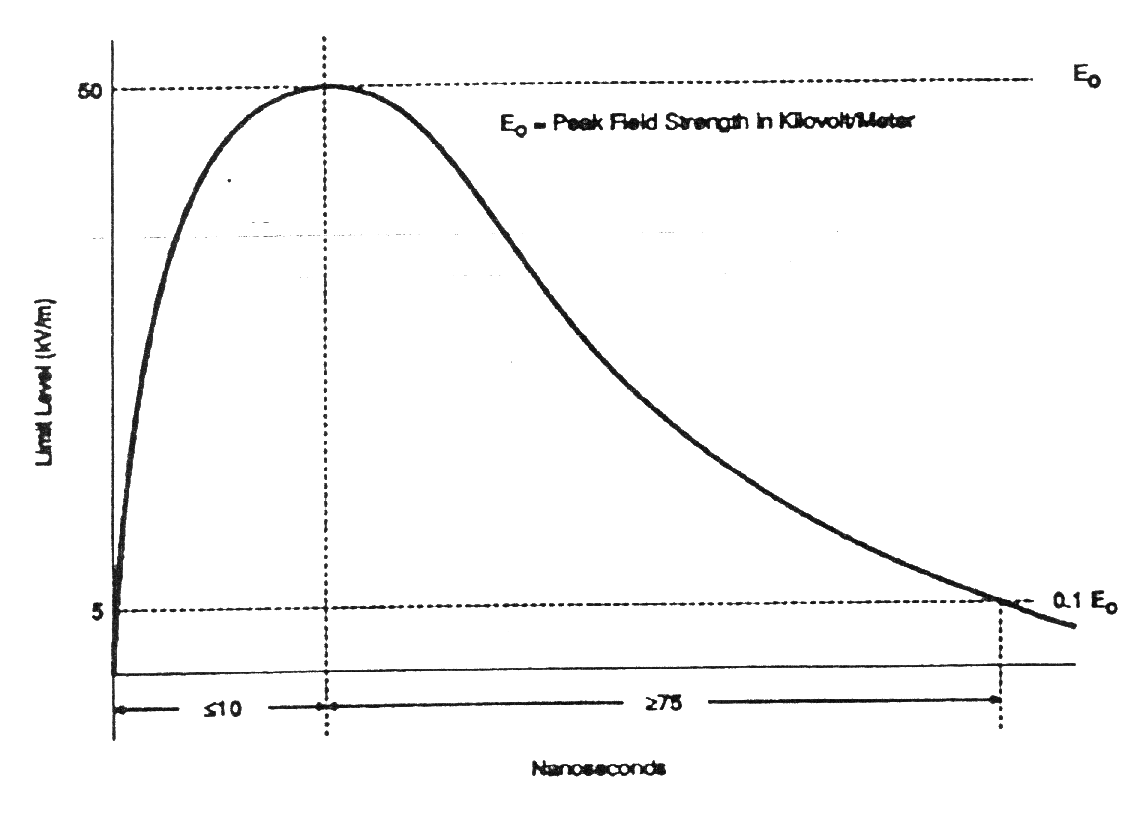
FIGURE 7. Radiated susceptibility transient electromagnetic field.
APPENDIX D
NUCLEAR, BIOLOGICAL AND CHEMICAL (NBC)
CONTAMINATION SURVIVABILITY
CRITERIA
A.1 SCOPE
A.1.1 Scope. This annex establishes quantitative NBC contamination survivability criteria for material. Quantitative criteria, expressed in terms of decontaminability, hardness, and compatibility, are designed to ensure that all materiel systems developed can be used by personnel who are wearing protective clothing and equipment.
A.2. CRITERIA
A.2.1 Decontaminability criteria.
A.2.1.1 Contaminants. The exterior and interior surfaces of materiel developed shall be designed such that NBC contamination remaining on, or desorbed or reaerosolized from, the surface following decontamination shall not result in more than a negligible risk (as defined in Table A-1) to unprotected personnel working inside, on, or 1 meter from the item. The following (worst case) conditions apply:
A.2.1.1.1 Exterior surfaces initially are uniformly and separately contaminated with:
a. 10g/m2 of thickened droplets of GD having a mass median diameter (MMD) of 2-5mm.
b. 10g/m2 of unthickened VX
c. 10g/m2 of unthickened HD
d. 105 spores/m2 of biological agent 1-5 micrometers in size.
e. 4 g/m2 of insoluble radioactive contaminants 37-200 micrometers in size and 185 Gbq/m2 gamma activity.
A.2.1.1.2 Initial contamination levels on interior surfaces subject to contamination are a factor of 10 lower than on exterior surfaces in the absence of evidence to the contrary.
A.2.1.1.3 Decontamination begins 1 hour after contamination using standard field decontaminants or simulants, equipment and procedures; and the decontamination process, excluding monitoring, lasts no longer that 75 minutes. Suitable simulants may be used.
A.2.1.1.4 Exposure of unprotected personnel to the decontaminated material is not to exceed 12 hours. Surface temperature is 30 ° C average and exterior wind speed no greater than one m/s (3.6km/h).
A.2.1.2 Induced activity. Materiel developed shall be designated such that, when exposed to a neutron fluence from a nuclear detonation that results in a total dose of 3,000 cGy (rad) to the crew of the equipment, the neutron induced activity in the item will result in no more than a negligible risk (as defined in Table A-1) to unprotected personnel arriving at H+2 and remaining inside, on, or 1 meter from the item, not to exceed 12 hours.
TABLE A-1. Negligible risk values for NBC contaminants.
|
Contaminant b |
Vapor/aerosol |
Liquid b |
|
Chemical |
(mg/min/m3 |
(mg/70-kg man) |
|
VX |
0.25 (.02 for visual acuity)a |
140 |
|
GD |
2.5 (.05 for visual acuity)a |
30 |
|
HD |
50 |
180 (0.01 mg/em2)d |
|
Biological c |
(maximum 12 hour exposure) |
|
|
Radiological |
||
|
Contaminants |
25 cGy (rad) |
|
|
Induced |
||
|
Activity |
25 cGy (rad) |
Notes:
a. Applies to pilots.
b. Applies to skin does, not absorption through the eyes.
c. Negligible risk values for biological agents are not determinable with the present data base. Since extremely minute quantities of some biological agents can cause incapacitation, equipment should be designed to allow a residue of no more than 500 spores/m2 of the specified initial contamination levels.
d. Since the effect of HD is localized, it is not appropriate to consider a threshold does of liquid HD as applying to the entire 70-kg man. Use of mass/body surface area (mg/cm2) units to describe the does for which negligible effects are observed is preferable with the provision that the location and surface area must be specified, since mild incapacitation depends on where the contamination exits and the extent of body surface involved.
A.2.1.2.1 Hardness criterion. (See A.3) Materiel developed shall be hardened to ensure that degradation over a 30-day period of no more than 20 percent in selected quantifiable mission essential performance characteristic is caused by 5 exposures to NBC contaminants, decontaminants, and decontaminating procedures encountered in the field.
A.2.1.2.2 Compatibility criterion. (See A.3) The design of materiel developed to perform mission-essential functions shall take into consideration the combination of equipment and personnel in anticipated NBC protection. The combination of equipment and NBC protection shall permit performance of mission-essential operation, communications, maintenance, resupply, and decontamination tasks by trained and acclimatized troops over a typical mission profile in a contaminated environment not to exceed 12 hours, in meteorological conditions of areas of intended use, with no degradation, excluding heat stress, of crew performance of mission-essential tasks greater than 15 percent below levels specified for these tasks when accomplished in a non-NBC environment.
A.3 Explanatory notes:
a. Selected negligible risk values are in Table A-1.
b. A one hour delay prior to beginning decontamination allows time for agent sorption, yet is generally not long enough to allow elimination of surface hazard by weathering.
c. Initial contamination levels for interiors are a factor of ten (10) lower to account for the protection provided by the enclosure. Interior surface contamination will be limited to the exposed areas that could reasonably be expected to result from a successful surprise attack on the materiel item postured in its most vulnerable configuration, and to those exposed surfaces normally susceptible to agent transfer from a contaminated crew.
d. Seventy-five minutes is a typical time for decontaminating items with present decontamination procedures.
e. A 30°C temperature represents a reasonable worst case temperature in the majority of likely areas of conflict.
f. Requiring low airspeeds (less than 3.6 km/h) results in greater chemical agent concentrations over time.
g. A radioactive fallout contamination of 185 Gbq/m2 would result in a H+1 dose rate of approximately 5 cGy (rad)/h at 1 meter from a typical large armored vehicle. Using 50 cGy (rad) as a negligible risk dose which would come from exposure over a mission profile period (maximum of 12-hours), one half from operational exposure (i.e., direct radiation from initial effects or from fallout on the ground) and the other half from equipment contamination, a decontaminability standard of 25 cGy (rad) dose per mission period is reasonable.
h. A neutron induced activity of 25 cGy (rad) per mission (maximum of a 12-hour exposure) should be attainable for all items if reasonable attention is given to problem materials.
i. The "5 exposure" requirement in the hardness criterion refers to a cumulative total of contamination/decontamination cycles using one or more contaminants and associated decontamination processes.
j. Mission profile is a time-phased description of the operational events and environments an item experiences from beginning to end of a specific mission. It identifies the tasks, events, durations, operating conditions, and environment of the system for each phase of a mission. A mission profile should be based on a typical scenario for the item/system.
A.4 CHARACTERISTICS OF NBC CONTAMINATION SURVIVABILITY
A.4.1 Characteristics. NBC contamination survivability is the capability of a system and its crew to withstand an NBC-contaminated environment, including decontamination, without losing the ability to accomplish the assigned mission. Characteristics of NBC contamination survivability are decontaminability, hardness, and compatibility. To survive NBC contamination, materiel must meet criteria for all three.
A.4.1.1 Decontaminability. The ability of a system to be decontaminated to reduce the hazard to personnel operating, maintaining, and resupplying it is termed "decontaminability." Key to this definition is the requirement to be able to reduce the hazard to personnel. Since the principal benefit of decontamination is to allow the crew to reduce its level of protection, decontaminability criteria must be related to the response of unprotected personnel. Even under a "fight dirty" concept of operations, decontaminabiltiy is required. NBC contaminants could eventually breach the shield of the protective ensemble. Therefore, when operations permit, they should be removed where they present a hazard. Further, decontamination reduces the soldier’s vulnerability when the shield is dropped to satisfy basic physiological needs or to replace components of the NBC protective ensemble. Criteria for decontaminability were developed by analyzing toxicity data; determining agent concentration levels corresponding to negligible risk (5 percent mild incapacitation) to unprotected personnel; and relating agent concentration to time, temperature, windspeed and threat parameters. Decontaminability is enhanced by considering:
a. Materials. Maximize use of material that do not absorb NBC contaminants and that facilitate their rapid removal with decontaminants readily available on the battlefield.
b. Design. Incorporate designs that reduce or prevent accumulation of NBC contamination and make those areas that are expected readily accessible for decontamination.
c. Contamination control. Employ devices and means that reduce the amount of contamination to be removed, such as positive overpressure systems for combat vehicles, packaging for supplies, and protective covers.
d. NBC equipment. Provide for integration of NBC detection, measurement, decontamination, and contamination control devices. Considerations for integration of such devices at the earliest stage of the materiel acquisition process promote maximum achievement of effective contamination avoidance, control, removal, and decontamination verification.
A.4.1.2 Hardness. The ability of a systems to withstand the damaging effects of NBC contamination and decontamination agents and procedures required to carry out the decontamination process is termed "hardness." Although strongly related to decontaminability, hardness is distinct characteristic; decontaminability is concerned with reducing the hazard to personnel as a result of decontamination efforts, while hardness is concerned with condition of the equipment after it has been subjected to an agent and decontamination. Criteria for hardness were developed by analyzing vulnerabilities of construction materials to agents and decontaminants; considering mission profiles of classes of materiel designed to perform mission-essential functions; and determining allowable percentage degradation of quantifiable performance characteristics such as reliability, availability, and maintainability (RAM) standards.
A.4.1.3 Compatibility. The ability of a systems to be operation, maintained, and resupplied by personnel wearing the full NBC protective ensemble is termed "compatibility." Even if a piece of equipment is completely hardened against NBC contamination and decontaminants and can also be easily decontaminated, it still must have the capability of being operated effectively while in a NBC contaminated environment. Thus, is the development of equipment designed to perform mission-essential functions one must consider the combination of the equipment and personnel in anticipated NBC protection.